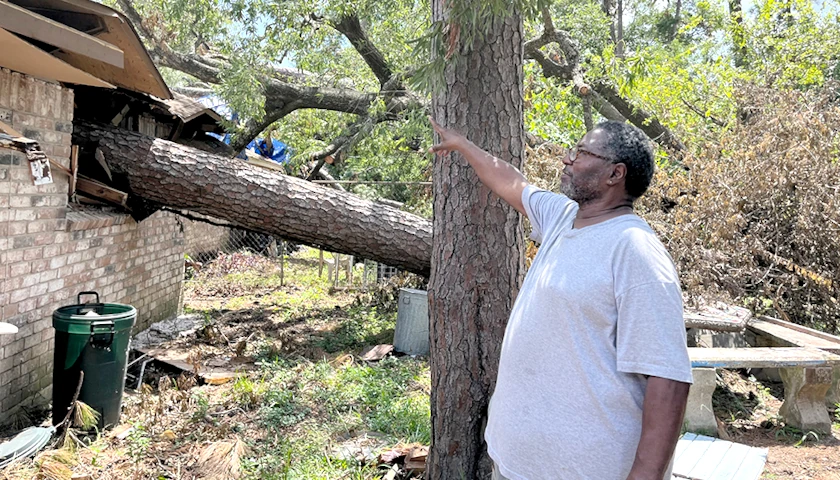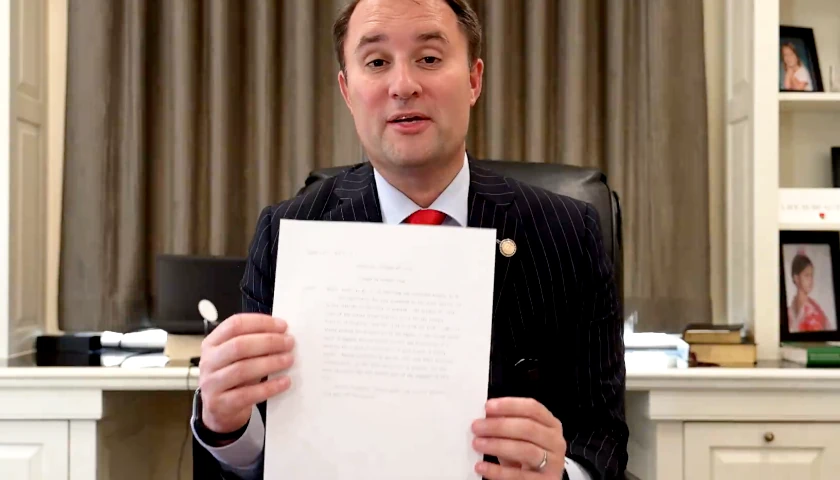by Bethany Blankley
The devastation Hurricane Beryl left in its wake is estimated to cost taxpayers nationwide between $28 billion and $32 billion, according to an AccuWeather analysis. The losses to Texas, which was hardest hit, are estimated to be several billion.
Hurricane Beryl made landfall near Matagorda, Texas, on July 8 as a Category 1 storm. It then made its way northeast, fueling tornadoes in eastern Texas and western Louisiana, up into Arkansas and Missouri. The storm turned into a tropical rainstorm moving into the Midwest and New England, causing flooding, localized tornadoes and strong winds.
“As a Category 1 hurricane, Beryl brought a damaging storm surge of 6-10 feet to areas near and just east of landfall, as well as winds of hurricane force (74 mph or greater) as far north as the Houston Metro,” AccuWeather reported. It was “a devastating storm early on, in what is expected to be a very busy and impactful hurricane season for the United States.”
To put Beryl into context, AccuWeather said, Hurricane Idalia, which first hit Florida last year, caused $18 billion to $20 billion in total damages and economic loss. Hurricane Ian, which also hit Florida in 2022, caused $180 billion to $210 billion. Texas’ historic 100-year flood event caused by Hurricane Harvey caused $230 billion in total damage and economic loss in 2017.
When estimating the storm’s financial impact, Waco-based The Perryman Group estimates the net impact of Beryl “could lead to economic losses (which would be observed over an extended period of time) including $4.6 billion in total expenditures, $2 billion in gross product, and $1.3 billion in earnings in Texas.” Nationwide, losses could total “roughly $7 billion in total expenditures, $3 billion in gross product, and $2 billion in earnings (including effects within Texas as well as spillover to other areas).”
In its July analysis, the group said, “Damages are only a part of the economic implications of the hurricane. Any economic stimulus, whether positive or negative, leads to additional responses and multiple rounds of business activity. Business operations have been interrupted, causing lost revenue and profits even beyond the damage to facilities. In many cases, these revenues cannot be recouped. Productivity has also been affected as workers are either absent due to problems with their homes and property or less effective on the job as they deal with those issues.”
Hundreds of businesses in the Houston area sued CenterPoint Energy in two $100 million class action lawsuits, The Center Square reported.
The Extreme Event Solutions group, Verisk, estimated insured losses to onshore properties to be between $2 billion and $3 billion. “Widespread and prolonged power outages in Texas are likely to be a legacy of Beryl’s arrival in the state,” it states.
“At peak, nearly 3 million households lost power in Texas from Beryl, with more than 2.2 million in Harris County alone. The outages could well drive significant claims due to food spoilage, mold, and losses to additional living expenses and business interruption coverages. Heavy rainfall led to roadways and homes becoming flooded throughout the Houston area …”
Verisk’s estimate excludes a lengthy list of categories, including “losses from storm surge, claims paid by the National Flood Insurance Program” (NFIP), losses associated with litigation, fraudulent assignment of benefits, inflation; “storm surge leakage losses on wind-only policies due to government intervention, precipitation-induced flooding, losses to inland marine, ocean-going marine cargo and hull, pleasure boats, … uninsured property damages, infrastructure losses, … damages from hazardous waste cleanup, vandalism, … tornadoes.”
Moody’s RMS Event Response estimates that insured losses from Hurricane Beryl will likely range between $2.5 billion and $4.5 billion and NFIP losses will be less than $300 million.
“Estimated losses reflect property damage and business interruption to residential, commercial, industrial, watercraft, and automobile lines of business, and consider sources of post-event loss amplification (PLA) and non-modeled sources of loss,” it states.
“Wind will largely drive U.S. private market insured losses from Beryl, though storm surge and inland flood-related losses could contribute to higher proportions of insured losses, particularly in some of the worst-affected Texas counties, in non-coastal regions with significant NFIP take-up rates,” Moody’s said. “Insured wind and NFIP losses will be driven by residential lines, while commercial and automobile lines will drive private market water losses, primarily in Texas.”
Beryl may cost the Texas Windstorm Insurance Association (TWIA) roughly half of its more than $450 million in its Catastrophe Reserve Trust Fund, ReInsurance Business reported. The association is expected to process 20,000 windstorm claims this year, making this year its third costliest, it says.
Because the current premium rate isn’t enough to cover higher inflationary costs, TWIA has proposed increasing rates by 10 percent.
The TWIA Board of Directors is meeting in Galveston on August 6 to vote on the 10 percent rate increase. Members of the public are invited to attend and submit comments.
Beryl’s costs are expected to cause insurance rates to skyrocket more than they already have, The Texas Tribune notes. Insurance premiums increased by 23 percent last year, the highest in the country, it reported, citing a S&P Global analysis.
– – –
Bethany Blankley is a contributor at The Center Square.
Photo “Destruction of Hurricane Beryl” by American Red Cross.









